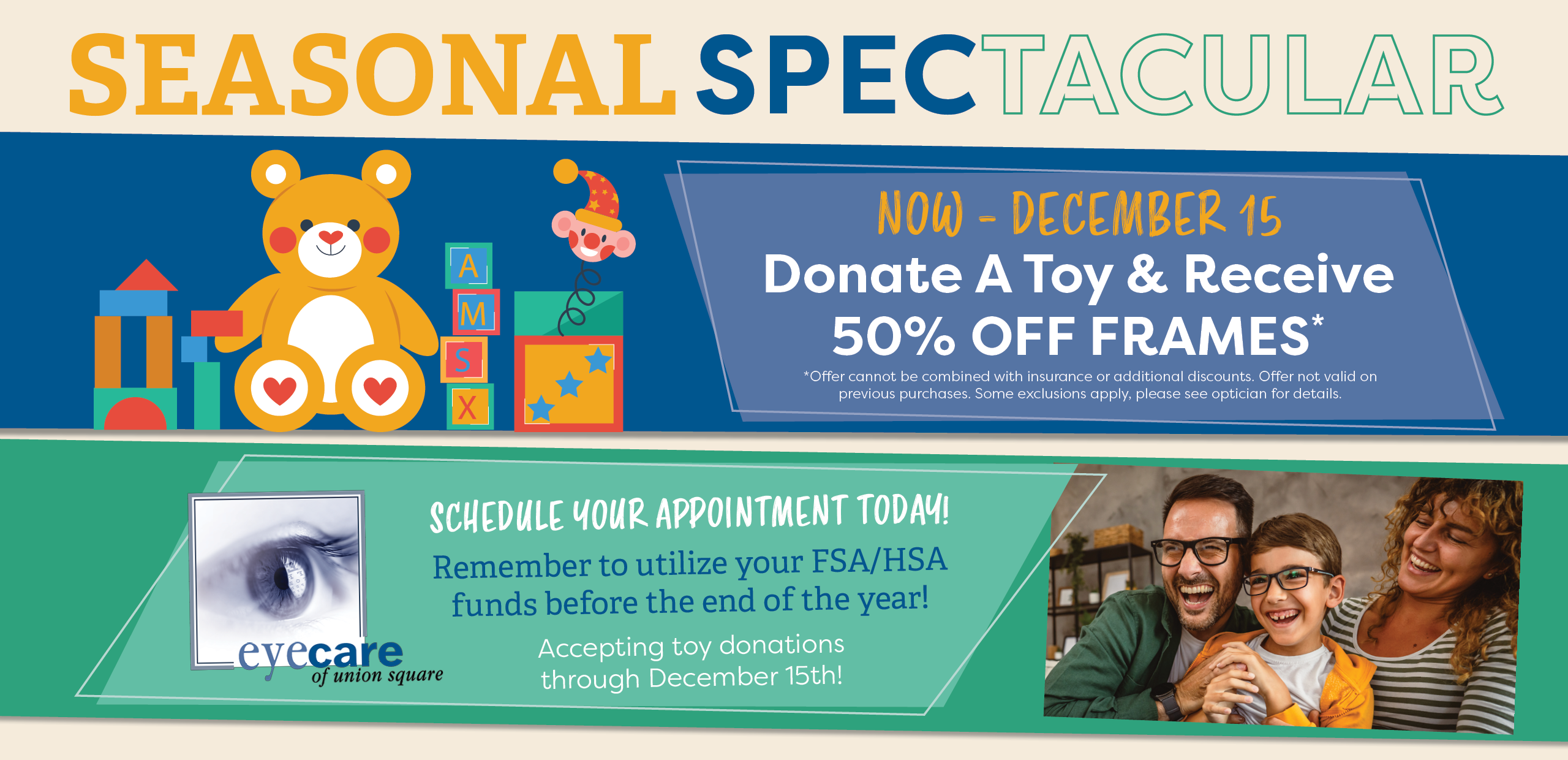
Understanding Myopia: Risks, Treatments, and Management | Eyecare of Union Square
Myopia, commonly known as nearsightedness, affects our ability to see distant objects clearly. Recently, the prevalence of myopia has been rapidly increasing. Myopia has doubled in U.S. Children over the past ten years, and it is estimated that 50% of the world’s population will be myopic by 2050. There are more treatment options available than just eyeglasses, so let’s delve into understanding myopia, its associated risks, and the various treatment options available.
Myopia develops when the eyeball becomes elongated, causing light rays to focus in front of the retina rather than directly on it. This causes blurred vision when looking at distant objects while nearby objects remain clear. Onset often occurs in childhood or adolescence and may progress as the eye continues to elongate. Key risk factors for myopia include:
- Increased “Close Work” Time: Spending over 2 hours per day on close work activities can increate the risk of myopia.
- Genetic Factors: Having myopic parents increases the likelihood of a child developing myopia, with a 25% chance if one parent is myopia and a 50% chance if both parents are myopic.
- Reduced Outdoor Time/Natural Light Exposure: Spending less than 60-90 minutes per day outdoors in natural sunlight may contribute to myopia.
High levels of myopia can increase the likelihood of developing sight-threatening conditions, such as retinal detachment, glaucoma, cataracts, and macular degeneration. Progression of myopia can also lead to an increased dependence on corrective lenses and potentially affect quality of life.
For long term management of myopia, replying on eyeglasses alone is insufficient. Here are some alternative treatments that have demonstrated proven results.
MiSight Lenses: Also called soft multifocal contact lenses, are an innovative way to manage myopia. They give clear distance vision and help slow down the eye's elongation by using different lens powers. Many studies show they work well in slowing myopia in kids and teens.
Ortho-K: Short for Orthokeratology, uses contact lenses worn overnight to gently reshape the cornea, temporarily correcting myopia. During the day, the cornea keeps its new shape, improving vision without glasses or daytime contact lenses. It's a popular option for managing myopia, especially for those who find daytime contacts inconvenient.
Atropine eye drops: These drops that are typically used to dilate pupils, are now used for managing myopia. In low doses like 0.01% or 0.05%, they slow myopia progression by relaxing the eye's focusing mechanism and stopping the eye from elongating. Studies show positive results with this treatment.
Managing myopia is crucial for protecting your vision and reducing the risks associated with its progression. With increased myopia prevalence, innovative treatments offer effective options to slow it down in kids and teens. Early action and routine check-ups are key to spotting and using the correct strategies for managing myopia. Contact us now to learn more we can assist with myopia management!






